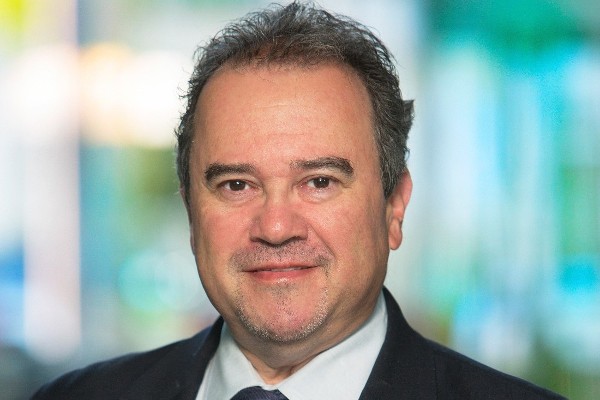
Tyndall has this year introduced its inaugural Distinguished Visiting Fellows Programme, which supports our strategic goals by connecting our research community with globally recognised research leaders. The programme will help establish new collaborations and also strengthen and deepen our existing ones.
Dr Steven A. Ringel
Dr Steven A. Ringel is one of our Distinguished Visiting Fellows we welcomed to Tyndall this year. Dr Ringel is a Tyndall Board Member and Distinguished University Professor and holds the Neal Smith Endowed Chair in Electrical and Computer Engineering at Ohio State, where he also serves as the Associate Vice President for Research and the Executive Director of Ohio State’s Institute for Materials Research.

During his visit to Tyndall this summer, Dr Ringel and his colleague, Jay Sayre, gave a talk to the Tyndall community on “Electrochemical Energy Storage Research and Innovation at The Ohio State University Institute for Materials and Manufacturing Research.”
Dr Ringel discussed with us his area of research and his thoughts on Tyndall’s Distinguished Fellows Programme.
Please provide a short synopsis about your area of research:
My research focuses on electronic materials and devices based on compound semiconductors targeting next generation technologies in solar cells, power electronics and high power RF communications. I specialize at the interface between materials science and device technologies, with a focus toward defects, heterointegration and harsh environment effects on semiconductors. My primary research activities range from epitaxial growth and spectroscopic characterization methods, to device designs and fabrication. His work has led to record-performance compound semiconductor-silicon tandem solar cells, the first all-epitaxial visible LEDs on Si, the experimental discovery of several atomic-scale defects that dictate the reliability of both gallium nitride and gallium oxide devices, and I worked on the development of several defect characterization methods being used worldwide to help guide next-generation wide bandgap electronic devices.
What motivated you to participate in Tyndall’s Distinguished Fellows programme?
Having become familiar with Tyndall's renowned reputation in areas of my research interests, and getting to see first-hand, not just the world-class people and capabilities, but also Tyndall's innovative and interdisciplinary ecosystem where researchers collaborate across the seams between academe and industry, I felt that Tyndall was a place that I HAD to experience first-hand.
What lasting impression of Tyndall will you take away from your time with us?
Tyndall is an amazing place, a world leader, and I think that my lasting impression will be that it is a true gem that can be the model for others in the world to follow.
Is there anything else you would like to share?
It is my great honour to be included in the Tyndall Distinguished Fellows Programme!
